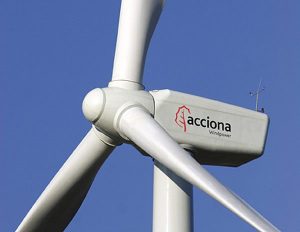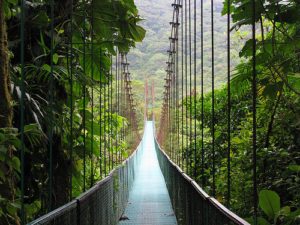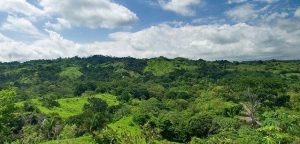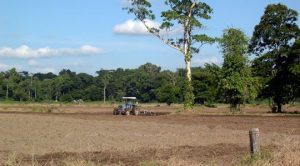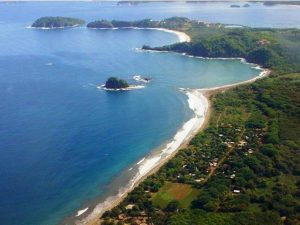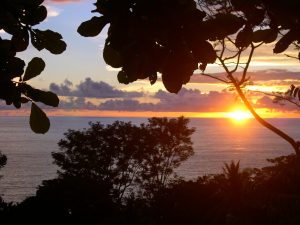1. A country open to foreign investment
It is known that the promotion and creation of ideal conditions for foreign investment isessential for the stimulation of exports. This also allows new technologies and createsemployment. The Costa Rican government and its laws encourage direct foreigninvestment. This attitude is shared by the two major political parties and has been implemented actively since the early eighties. Also, the improvement of conditions destined to attract foreign companies has been the trademark for the past 15 years.
To support this effort, CINDE (Costa Rican Investment and Trade Development Board), a private non-profit organization, was set up to assist and guide investors and companies in the set up for operations in Costa Rica.
A further step on this effort was the promulgation of legislation providing significant tax and operational incentives to companies in export related activities. These sets of incentives are: the export contract, the free zone and the temporary admission system, all of which include total or partial tax exemptions and expedite customs clearance services among other simplified operational aspects.
Costa Rican laws, regulations and practices foster competition and do not discriminate between locals and foreigners, for the conduction of business. The only exceptions to this are the entities that are constitutionally precluded from total foreign ownership such as telecommunications, energy generation and insurance. Tax, labor, health and safety laws do not inhibit the flow of investment.
Costa Rica is the oldest and most established democracy in Latin America. Historically, the country’s political system and social structure have contrasted sharply with those of its neighboring nations. Costa Rica has managed to develop and maintain democratic institutions in an orderly and constitutional scheme, which has been conducive to government succession.
The armed forces were abolished in 1949, and the resources once consumed by the military have since been used to promote education and provide free access to health services. This is one of many reasons why Costa Rica tends to show better standard and quality of living indicators than most other countries in Latin America.
The country’s political system is based on a structure of real checks and balances between the different administrative powers, and operates under a presidential system similar to that of the United States.
3. Economic situation overview
In terms of economic performance, although Costa Rica’s GDP grew 7.0% during 1996 (current dollars), it still fell short of the country’s goals. Strict economic policies have been established in an attempt to further stimulate the country’s growth and reduce public spending and public deficit. These include significant restructuring and downsizing of Government apparatus. During the first trimester of 1997, tax recollection increased a 12.88% in real terms, compared to the first trimester of 1996, while the increase in government expenses was 8,28% in real terms, compared to the same period in 1996. These figures show favorable trend in deficit reduction.
Recent administrations have been enacting policies to liberalize, modernize, and diversify the economy and financial sector. The country is seeing the results of diversification in the rapid development of non-traditional exports and services.
Costa Rica has lowered its external tariffs in the last years, reaching a present range between 0% and 19% for most imported products (May 1997).
The government is currently deregulating the banking system, which has been controlled by the state since 1949. In October 1992, private banks were allowed to receive short-term deposits and in 1996, to have access to checking and saving accounts.
At present the Government of Costa Rica still owns or controls some industries and services such as petroleum refining (RECOPE), telecommunications I.C.E.-RACSA and insurance (I.N.S.). However, various efforts, including a “State Reform” project currently being executed, are being made to cut back government expenses. The government’s size is being reduced by privatizing state-owned services, transferring labor from the public to the private sector, and the previously mentioned initiative of allowing private banks to have access to both current and saving accounts. Significant tax and constitutional reforms have also being established.
In 1990 for example, the National Electricity Board (ICE) approved the co-generation of electricity by the private sector, providing a clear example of downsizing efforts. Recent reforms allow for an even larger participation of private companies, the ultimate goal being a reduction in the costs of these utilities.
A series of stabilization measures initiated in March of 1995, are beginning to have an effect on Costa Rica’s economic environment as export activity continues to show a healthy and sustained growth (growth in 1996 was 7.6%). Traditionally an agricultural country, industrial output has progressively become one of the major contributors to the productive structure and GDP components, and tourism, one of the country’s main revenue generators, particularly since the late eighties, when the country started being known internationally as attractive tourist destination.
Economic indicators demonstrate the results of recent reforms. For example, although the unemployment rate rose 4.2% in 1994 to 5.3% in 1995 and to 6.2% in 1996, and real wages suffered a 1.8% reduction, the GDP per capita remained almost the same (0.3% reduction in 1996) and is expected to start growing again shortly. New tax collection procedures and the tendency of passive interest rates to steadily decline, indicates that economic activity will reactivate significantly during the rest of 1997.
During the 1995 the Central Government’s deficit represented 4.5% of the GDP and it rose to 4.8% in 1996. These figures are higher than the goals established by the I.M.F of 4.1% in 1995 and 0.5% in 1996. Expert estimates for 1997 consider a 3.7% deficit will be the figure by the end of 1997. The accumulated deficit at the end of the first trimester of 1997 was US$73.7 millions, 6.3% lower than for the same period of 1996.
The expected lower fiscal deficit, lower interest rates and the contraction of the aggregate demand, reduced pressure on price levels. In 1996, inflation was down to 13.9%, from 22.6% in 1995. Lowers levels of inflation have allowed the Central Bank to decline the devaluation rate. By the end of 1996, the devaluation was 12.8%, down from 18.0% for 1995.
4. Foreign Trade
Costa Rica’s productive structure has changed dramatically in the past 15 years. The country is seeing the results of the diversification in the high growth of non-traditional exports and services. This change was fostered by policies geared towards the attraction of direct foreign investment in manufacturing sectors. The traditional exports (coffee, bananas, meat and sugar) dropped to 24.2% of foreign exchange generating activities during 1996, after representing over 80% just 15 years ago. Non-traditional exports, which include products as palm hearts, fruit pulp, pineapple, melon and cut flowers are today’s leaders, accounting for 60.7% of 1996 foreign exchange generating activities. Tourism also plays a major role generating foreign exchange, though it dropped from 16% in 1995, to 15% in 1996.
The variety and value of exports has been steadily increasing, and a 7.6% increase on total exports was observed in 1996. This makes Costa Rica not only the leading exporter in Central America, but also the second largest per capita exporter in Latin America after Chile. This is especially impressive when considering that the country has one of the smallest populations in the region.
Costa Rica’s accession to the GATT (General Agreement on Tariffs and Trade) in 1990, was agreed in order to implement a more stable unified tariff and tax system. Also, import duties have been reduced from the Central American maximum tariff.
Market accessibility from Costa Rica also contributes to the benefits of the investment climate. For instance, Costa Rica is Caribbean Basin Initiative (CBI) beneficiary. This implies that Costa Rican exports have duty free access to the United States (exceptions being apparel, tuna and some leather products). As of January 1995, a full encompassing Free Trade Agreement with Mexico came into effect. This agreement stipulates that existing tariffs and quotas on more than 8000 products will be phased out in the following 10 years (depending on the product).
As a member of the Central American Common Market, Costa Rican products enter El Salvador, Guatemala, Honduras and Nicaragua completely or partially duty free. Costa Rica has also signed a Tax Information Exchange Agreement (TIEA) with the United States.
5. Right private ownership and establishing operations
Aside from the services that have been stipulated to be managed by the government, or that require citizenship or residency, (full ownership of mass media for example), all private entities and individuals, regardless of their citizenship, may establish an own business enterprises. Foreign companies or investors can set up branches, joint ventures, or wholly-owned subsidiaries. Individuals or foreign partnerships can operate as stock or charter corporations. Foreigners can be officers, directors, partners or trustees of companies and can negotiate commercial documents in order to carry on with contracts and legal actions as locals.
The stock corporation (Sociedad Anonima) is the most commonly used form of association, both by local and foreign investors.
The exceptions for total foreign ownership occur in sectors that have been traditionally reserved for the government, such as insurance, telecommunications and oil refining. However, in some of these instances, the private sector may participate as a concessionaire by providing re-insurance services to the state monopoly. These limitations or restrictions apply to local as well as foreign companies or individuals.
During recent years, formerly state-owned companies have been sold to the private sector (food retailing, sugar production, aluminum processing). Also, in 1992 a “Low for Public Work Concession”, was enacted, in order to allow to the private sector to participate, through a public bid process, in areas previously reserved for the government. This low will enable an efficient service in those in which public entities do not complete adequately.
6. Capital or funds repatriation and transfer policies
There are no limitations to transfer capital or funds associated with an investment, regardless of the currency. Exchange controls were revoked in 1992, and the management of foreign currencies became entirely independent, therefore, no restrictions are imposed on re-investments or on repatriation of earnings, royalties or capital. However, taxes are sometimes collected. In addition, there is no requirement to register investments with any of the government authorities.
Under the Free Zone System for example, capital or profit repatriation is tax-exempt.
7. Incentives for foreign investment
There are no performance requirements or minimum investment levels for foreign investors.
Investments incentives are available for the activities that are directly related to the exportation of services and/or products from Costa Rica. These incentives are: the free zone system and the temporary admission system, each one regulated by its own particular legislation.
The free zone system (export processing zones) was created by law in 1981 and was managed by government entities until 1986. Ever since, it was determined that the State should divest itself from the ownership and management of the industrial parks. Private developers were encouraged to establish parks throughout the country. Currently there are eight “free zones” or industrial parks in operation.
This system grants beneficiary companies with the widest range of benefits currently available in Costa Rica. Among the fiscal benefits granted under the provisions of the free zone legislation are:
- exemption from import duties on raw materials, parts and components;
- exemption from taxes on profits for determined periods of time;
- exemption from taxes on remittances abroad;
- exemption from export taxes;
- exemption from sales tax on local purchases of goods and services.
Operational incentives such as on-site and expedite customs clearance and in some cases subsidized training are also available.
The export contract was also set up at the beginning of the eighties, granting some tax exemptions, tax rebates and credits in proportion to the amounts exported. Because of the requirement to comply with GATT (of which Costa Rica is a signatory) guidelines, this system expired in 1996, and the subsequent contracts granted only provide companies limited fiscal benefits.
The temporary admission system was set up specifically for drawback type operations. Companies can import processed raw materials into Costa Rica free of duties in order to have been used mainly by local contractors, however, foreign companies (mostly apparel manufacturers) have also taken advantage of it. Even though the flexibility and the scope of the fiscal is quite limited in comparison to the free zone system.
Some fiscal incentives are still available for tourism related investments. However, it is expected that the remaining benefits will be eliminated throughout 1996.
8. Capital markets and portfolio investment
The three state-owned banks (Banco de Costa Rica, Banco Nacional and Banco Credito Agricola) used to supply about 80% of the credit. As of 1996, there will exist a monopoly on demand savings and checking accounts. Private banks have a larger participation due to their expansion and can now offer service nationwide.
Long term capital is scarce due to variations in the inflation rate and a small domestic capital market.
There is an active stock exchange, the largest in Central America although small with regards to international standards. It is seldom used to raise capital, however, projects in the tourism industry have used it as a source of capital. Shares, bonds, promissory notes and securities, among others, are exchange every day in primary and secondary markets.
Foreign investors can borrow in the local market, but the cost is very high due to macroeconomic policy. It is advised to bring funds from abroad. As mentioned before, there are no limitations on capital or exportation regardless of the citizenship or company.
9. Direct foreign investment
Due to the fact of registry of foreign capital is not required, there are no statistics on annual amounts of foreign investment or its origin. Several hundred American, European and Asian companies have manufacturing facilities, distribution centers or offices in Costa Rica.
These organizations either service the country and the region or export to their country of origin. Foreign investment has grown considerably in recent years, particularly in tourism related and industrial activities because of the favorable operational environment the country has to offer.
From Costa Rica Investment Board
Projects that are Recommended by The Costa Rica News
1. Columbus Heights – Residential Development Playa Hermosa
2. Multi-Purpose Real Estate – Agro Farms Backed by Real Estate Title
3. Los Delfines – Tambor Residential Development
1. A country open to foreign investment
It is known that the promotion and creation of ideal conditions for foreign investment isessential for the stimulation of exports. This also allows new technologies and createsemployment. The Costa Rican government and its laws encourage direct foreigninvestment. This attitude is shared by the two major political parties and has been implemented actively since the early eighties. Also, the improvement of conditions destined to attract foreign companies has been the trademark for the past 15 years.
To support this effort, CINDE (Costa Rican Investment and Trade Development Board), a private non-profit organization, was set up to assist and guide investors and companies in the set up for operations in Costa Rica.
A further step on this effort was the promulgation of legislation providing significant tax and operational incentives to companies in export related activities. These sets of incentives are: the export contract, the free zone and the temporary admission system, all of which include total or partial tax exemptions and expedite customs clearance services among other simplified operational aspects.
Costa Rican laws, regulations and practices foster competition and do not discriminate between locals and foreigners, for the conduction of business. The only exceptions to this are the entities that are constitutionally precluded from total foreign ownership such as telecommunications, energy generation and insurance. Tax, labor, health and safety laws do not inhibit the flow of investment.
Costa Rica is the oldest and most established democracy in Latin America. Historically, the country’s political system and social structure have contrasted sharply with those of its neighboring nations. Costa Rica has managed to develop and maintain democratic institutions in an orderly and constitutional scheme, which has been conducive to government succession.
The armed forces were abolished in 1949, and the resources once consumed by the military have since been used to promote education and provide free access to health services. This is one of many reasons why Costa Rica tends to show better standard and quality of living indicators than most other countries in Latin America.
The country’s political system is based on a structure of real checks and balances between the different administrative powers, and operates under a presidential system similar to that of the United States.
3. Economic situation overview
In terms of economic performance, although Costa Rica’s GDP grew 7.0% during 1996 (current dollars), it still fell short of the country’s goals. Strict economic policies have been established in an attempt to further stimulate the country’s growth and reduce public spending and public deficit. These include significant restructuring and downsizing of Government apparatus. During the first trimester of 1997, tax recollection increased a 12.88% in real terms, compared to the first trimester of 1996, while the increase in government expenses was 8,28% in real terms, compared to the same period in 1996. These figures show favorable trend in deficit reduction.
Recent administrations have been enacting policies to liberalize, modernize, and diversify the economy and financial sector. The country is seeing the results of diversification in the rapid development of non-traditional exports and services.
Costa Rica has lowered its external tariffs in the last years, reaching a present range between 0% and 19% for most imported products (May 1997).
The government is currently deregulating the banking system, which has been controlled by the state since 1949. In October 1992, private banks were allowed to receive short-term deposits and in 1996, to have access to checking and saving accounts.
At present the Government of Costa Rica still owns or controls some industries and services such as petroleum refining (RECOPE), telecommunications I.C.E.-RACSA and insurance (I.N.S.). However, various efforts, including a “State Reform” project currently being executed, are being made to cut back government expenses. The government’s size is being reduced by privatizing state-owned services, transferring labor from the public to the private sector, and the previously mentioned initiative of allowing private banks to have access to both current and saving accounts. Significant tax and constitutional reforms have also being established.
In 1990 for example, the National Electricity Board (ICE) approved the co-generation of electricity by the private sector, providing a clear example of downsizing efforts. Recent reforms allow for an even larger participation of private companies, the ultimate goal being a reduction in the costs of these utilities.
A series of stabilization measures initiated in March of 1995, are beginning to have an effect on Costa Rica’s economic environment as export activity continues to show a healthy and sustained growth (growth in 1996 was 7.6%). Traditionally an agricultural country, industrial output has progressively become one of the major contributors to the productive structure and GDP components, and tourism, one of the country’s main revenue generators, particularly since the late eighties, when the country started being known internationally as attractive tourist destination.
Economic indicators demonstrate the results of recent reforms. For example, although the unemployment rate rose 4.2% in 1994 to 5.3% in 1995 and to 6.2% in 1996, and real wages suffered a 1.8% reduction, the GDP per capita remained almost the same (0.3% reduction in 1996) and is expected to start growing again shortly. New tax collection procedures and the tendency of passive interest rates to steadily decline, indicates that economic activity will reactivate significantly during the rest of 1997.
During the 1995 the Central Government’s deficit represented 4.5% of the GDP and it rose to 4.8% in 1996. These figures are higher than the goals established by the I.M.F of 4.1% in 1995 and 0.5% in 1996. Expert estimates for 1997 consider a 3.7% deficit will be the figure by the end of 1997. The accumulated deficit at the end of the first trimester of 1997 was US$73.7 millions, 6.3% lower than for the same period of 1996.
The expected lower fiscal deficit, lower interest rates and the contraction of the aggregate demand, reduced pressure on price levels. In 1996, inflation was down to 13.9%, from 22.6% in 1995. Lowers levels of inflation have allowed the Central Bank to decline the devaluation rate. By the end of 1996, the devaluation was 12.8%, down from 18.0% for 1995.
Costa Rica’s productive structure has changed dramatically in the past 15 years. The country is seeing the results of the diversification in the high growth of non-traditional exports and services. This change was fostered by policies geared towards the attraction of direct foreign investment in manufacturing sectors. The traditional exports (coffee, bananas, meat and sugar) dropped to 24.2% of foreign exchange generating activities during 1996, after representing over 80% just 15 years ago. Non-traditional exports, which include products as palm hearts, fruit pulp, pineapple, melon and cut flowers are today’s leaders, accounting for 60.7% of 1996 foreign exchange generating activities. Tourism also plays a major role generating foreign exchange, though it dropped from 16% in 1995, to 15% in 1996.
The variety and value of exports has been steadily increasing, and a 7.6% increase on total exports was observed in 1996. This makes Costa Rica not only the leading exporter in Central America, but also the second largest per capita exporter in Latin America after Chile. This is especially impressive when considering that the country has one of the smallest populations in the region.
Costa Rica’s accession to the GATT (General Agreement on Tariffs and Trade) in 1990, was agreed in order to implement a more stable unified tariff and tax system. Also, import duties have been reduced from the Central American maximum tariff.
Market accessibility from Costa Rica also contributes to the benefits of the investment climate. For instance, Costa Rica is Caribbean Basin Initiative (CBI) beneficiary. This implies that Costa Rican exports have duty free access to the United States (exceptions being apparel, tuna and some leather products). As of January 1995, a full encompassing Free Trade Agreement with Mexico came into effect. This agreement stipulates that existing tariffs and quotas on more than 8000 products will be phased out in the following 10 years (depending on the product).
As a member of the Central American Common Market, Costa Rican products enter El Salvador, Guatemala, Honduras and Nicaragua completely or partially duty free. Costa Rica has also signed a Tax Information Exchange Agreement (TIEA) with the United States.
5. Right private ownership and establishing operations
Aside from the services that have been stipulated to be managed by the government, or that require citizenship or residency, (full ownership of mass media for example), all private entities and individuals, regardless of their citizenship, may establish an own business enterprises. Foreign companies or investors can set up branches, joint ventures, or wholly-owned subsidiaries. Individuals or foreign partnerships can operate as stock or charter corporations. Foreigners can be officers, directors, partners or trustees of companies and can negotiate commercial documents in order to carry on with contracts and legal actions as locals.
The stock corporation (Sociedad Anonima) is the most commonly used form of association, both by local and foreign investors.
The exceptions for total foreign ownership occur in sectors that have been traditionally reserved for the government, such as insurance, telecommunications and oil refining. However, in some of these instances, the private sector may participate as a concessionaire by providing re-insurance services to the state monopoly. These limitations or restrictions apply to local as well as foreign companies or individuals.
During recent years, formerly state-owned companies have been sold to the private sector (food retailing, sugar production, aluminum processing). Also, in 1992 a “Low for Public Work Concession”, was enacted, in order to allow to the private sector to participate, through a public bid process, in areas previously reserved for the government. This low will enable an efficient service in those in which public entities do not complete adequately.
6. Capital or funds repatriation and transfer policies
There are no limitations to transfer capital or funds associated with an investment, regardless of the currency. Exchange controls were revoked in 1992, and the management of foreign currencies became entirely independent, therefore, no restrictions are imposed on re-investments or on repatriation of earnings, royalties or capital. However, taxes are sometimes collected. In addition, there is no requirement to register investments with any of the government authorities.
Under the Free Zone System for example, capital or profit repatriation is tax-exempt.
7. Incentives for foreign investment
There are no performance requirements or minimum investment levels for foreign investors.
Investments incentives are available for the activities that are directly related to the exportation of services and/or products from Costa Rica. These incentives are: the free zone system and the temporary admission system, each one regulated by its own particular legislation.
The free zone system (export processing zones) was created by law in 1981 and was managed by government entities until 1986. Ever since, it was determined that the State should divest itself from the ownership and management of the industrial parks. Private developers were encouraged to establish parks throughout the country. Currently there are eight “free zones” or industrial parks in operation.
This system grants beneficiary companies with the widest range of benefits currently available in Costa Rica. Among the fiscal benefits granted under the provisions of the free zone legislation are:
- exemption from import duties on raw materials, parts and components;
- exemption from taxes on profits for determined periods of time;
- exemption from taxes on remittances abroad;
- exemption from export taxes;
- exemption from sales tax on local purchases of goods and services.
Operational incentives such as on-site and expedite customs clearance and in some cases subsidized training are also available.
The export contract was also set up at the beginning of the eighties, granting some tax exemptions, tax rebates and credits in proportion to the amounts exported. Because of the requirement to comply with GATT (of which Costa Rica is a signatory) guidelines, this system expired in 1996, and the subsequent contracts granted only provide companies limited fiscal benefits.
The temporary admission system was set up specifically for drawback type operations. Companies can import processed raw materials into Costa Rica free of duties in order to have been used mainly by local contractors, however, foreign companies (mostly apparel manufacturers) have also taken advantage of it. Even though the flexibility and the scope of the fiscal is quite limited in comparison to the free zone system.
Some fiscal incentives are still available for tourism related investments. However, it is expected that the remaining benefits will be eliminated throughout 1996.
8. Capital markets and portfolio investment
The three state-owned banks (Banco de Costa Rica, Banco Nacional and Banco Cr�dito Agr�cola) used to supply about 80% of the credit. As of 1996, there will exist a monopoly on demand savings and checking accounts. Private banks have a larger participation due to their expansion and can now offer service nationwide.
Long term capital is scarce due to variations in the inflation rate and a small domestic capital market.
There is an active stock exchange, the largest in Central America although small with regards to international standards. It is seldom used to raise capital, however, projects in the tourism industry have used it as a source of capital. Shares, bonds, promissory notes and securities, among others, are exchange every day in primary and secondary markets.
Foreign investors can borrow in the local market, but the cost is very high due to macroeconomic policy. It is advised to bring funds from abroad. As mentioned before, there are no limitations on capital or exportation regardless of the citizenship or company.
9. Direct foreign investment
Due to the fact of registry of foreign capital is not required, there are no statistics on annual amounts of foreign investment or its origin. Several hundred American, European and Asian companies have manufacturing facilities, distribution centers or offices in Costa Rica.
These organizations either service the country and the region or export to their country of origin. Foreign investment has grown considerably in recent years, particularly in tourism related and industrial activities because of the favorable operational environment the country has to offer.
From Costa Rica Investment Board
Projects that are Recommended by The Costa Rica News
1. Columbus Heights – Residential Development Playa Hermosa
2. Multi-Purpose Real Estate – Agro Farms Backed by Real Estate Title
3. Los Delfines – Tambor Residential Development


